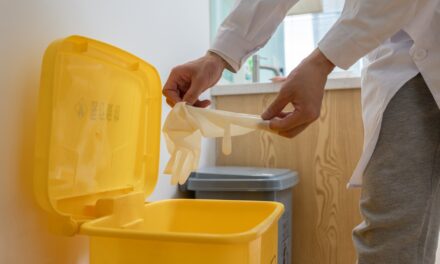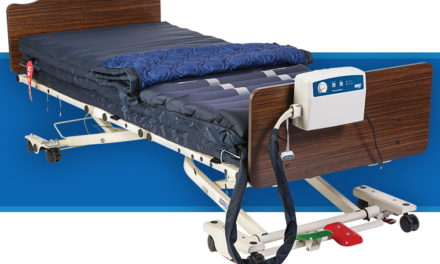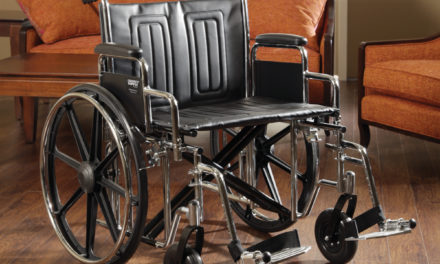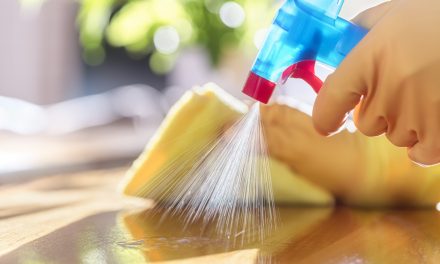Are Long Term Care Staff Shortages Made Worse by the Air in Your Facility?
Staff shortages in Long Term Care (LTC) have been a problem for Senior Living Administrators for quite some time. The pandemic only worsened hiring and retaining staff and nurses. Now, staff turnover rate is up to an average of 94%, and increases up to 128% for low-rated facilities1.
However, facilities with the highest ratings experience a lower average turnover rate of 76.7%. Therefore, it is imperative for LTC Administrators interested in reducing their turnover rate to identify and address areas of improvement in their facility to support the retention of their Long Term Care staff. While there are many contributors to short-staffing and turnover, one invisible contributor may play a larger role than it gets credit for: Indoor air quality (IAQ).
In a recent study, 62% of the 3,000 workers surveyed stated that they would be willing to leave their job if their building’s indoor air quality was not improved2. 89% believe that their building’s air quality has a direct impact on their physical health.
Another study found that increased employee sick leave was associated with lack of proper ventilation in their work environment3. It is clear that the air in your facility can have a major impact on your staff, and may worsen the already pressing staffing problem facing LTC today. In this article, we discuss the health, wellness, and performance issues your staff may face on account of poor indoor air quality – and what you can do to address the problem.
Indoor Air Quality in Long Term Care Webinar Available Now!
Learn from our expert panelists as they share valuable information and tips about the various impacts of indoor air quality on your residents, staff, and business outcomes.
What Does it Mean to Have Poor Indoor Air Quality in Your Long Term Care Facility?
78% of Senior Living Administrators believe their indoor air quality is good or excellent but 81% of LTC facilities suffer from poor ventilation4.
Air quality is typically considered poor when there are elevated levels of contaminants in the air. Some common sources of contaminants in Senior Living buildings can include:
- Airborne infectious disease particles such as SARS-CoV-2 and the flu
- Volatile organic compounds (VOCs) which can be found in both personal products such as nail polish and hairspray and building materials such as cleaning products and paint
- Particulate matter from cooking and vacuuming
- Carbon dioxide from exhalation
- Smoke resulting from environmental events like wildfires
- Odors
While most air pollution is invisible, that does not mean it is not there. These and other contaminants are in the air your staff and residents breath every day. It is important to address them and remove or reduce them so that your staff and residents can experience a healthier environment.
CMP Funding Available: Claim Up to $3,000 for IAQ Improvements
The Civil Monetary Penalties Reinvestment Program has funds available for qualifying LTCs. Receive up to $3,000 to invest in portable air purifiers and filtration devices. Funds are available on a state-by-state basis and are first-come, first-served.
How Poor IAQ Impacts Your Long Term Care Staff
There are multiple ways poor IAQ can impact the health, wellness, and performance of your Senior Living staff. Some of these include:
- Spread of airborne infectious disease can make caring for LTC residents one of the most deadly jobs in the country5
- Chronic headaches and gastrointestinal distress associated with exposure to odors in poorly ventilated facilities6
- Decrease in job satisfaction and increase in stress when exposed to foul odors and other environmental pollutants for long periods of time with no power to change their environment7
- Decrease in productivity due to long-term exposure to a poorly ventilated work environment8
- Short term effects such as dry, itchy eyes and throat as well as increased risk of developing serious health issues such as respiratory illness, heart disease, and cancer9
Your staff members work long, hard hours inside your facility. When those hours are spent breathing air with increased levels of harmful chemicals and particulate matter, the health and performance outcomes are likely to be worse than if your air was cleaner.
What Outcomes Can Better IAQ Produce for Your Long Term Care Staff?
If your facility suffers from poor IAQ, improvements are likely to reduce or remove the negative health and wellness symptoms your staff may face. Moreover, communicating your IAQ improvement efforts demonstrates your commitment to their wellbeing at work – something increasingly important to staff10.
When you both invest in air quality products and keep your staff informed of the quality of the air they breathe, it is possible that you will see a boost in your staff retention rates. You may also see new prospective staff members excited to work with you, as they will know that their health and wellbeing matters to you.
In addition, improved health and wellness as a result of cleaner indoor air can lead to better decision making, less workplace stress, and less absenteeism11, 12. That’s a win for your staff, your residents, and your business.
Achieve Better Air Quality for Your Long Term Care Staff
The right knowledge can help you provide a better environment for your long term care team and residents alike. Watch our IAQ in Long Term Care webinar to learn more about the impact of poor IAQ on your staff, residents, and business. You’ll walk away with vital information you can use to improve your facility’s IAQ.
1 https://skillednursingnews.com/2021/03/nursing-homes-have-94-staff-turnover-rate-with-even-higher-churn-at-low-rated-facilities/
2 https://finance-yahoo-com.cdn.ampproject.org/c/s/finance.yahoo.com/amphtml/news/honeywell-survey-reveals-72-office-125900755.html&sa=D&source=docs&ust=1647063365285498&usg=AOvVaw0oS6iL_7JNRj_UmZRPf65k
3 https://pubmed.ncbi.nlm.nih.gov/11089326/&sa=D&source=docs&ust=1647063365285762&usg=AOvVaw1bYAqdTVrOoXmtmLutaouf
4 National Library of Medicine. “81% of Senior Living Buildings have insufficient HVAC systems”, https://pubmed.ncbi.nlm.nih.gov/33401060.
5 https://www.scientificamerican.com/article/nursing-home-workers-had-one-of-the-deadliest-jobs-of-2020/&sa=D&source=docs&ust=1647063365274933&usg=AOvVaw33wOE151a8HSIRbSyeWXjZ
6 Prior D, Mitchell A, Nebauer M, Smith M. Oncology nurses’ experience of dimethyl sulfoxide odor. Cancer Nurs. 2000 Apr;23(2):134-40. doi: 10.1097/00002820-200004000-00010. PMID: 10763285
7 Applebaum, D., Fowler, S., Fiedler, N., Osinubi, O., & Robson, M. (2010). The impact of environmental factors on nursing stress, job satisfaction, and turnover intention. The Journal of nursing administration, 40(7-8), 323–328. https://doi.org/10.1097/NNA.0b013e3181e9393b
8 Wyon DP. The effects of indoor air quality on performance and productivity. Indoor Air. 2004;14 Suppl 7:92-101. doi: 10.1111/j.1600-0668.2004.00278.x. PMID: 15330777.
9 https://www.google.com/url?q=https://www.epa.gov/indoor-air-quality-iaq/introduction-indoor-air-quality%23longterm&sa=D&source=docs&ust=1647063365281844&usg=AOvVaw2yL6FI-j7tj7aE74X30w70
10 https://finance-yahoo-com.cdn.ampproject.org/c/s/finance.yahoo.com/amphtml/news/honeywell-survey-reveals-72-office-125900755.html&sa=D&source=docs&ust=1647063365275526&usg=AOvVaw3jjrhHbE0y1WIG6YNyA00b
11 https://www.investopedia.com/terms/a/absenteeism.asp&sa=D&source=docs&ust=1647063365280407&usg=AOvVaw0xjvTZprs2Mh8FYfX8HjMw
12 Wyon DP. The effects of indoor air quality on performance and productivity. Indoor Air. 2004;14 Suppl 7:92-101. doi: 10.1111/j.1600-0668.2004.00278.x. PMID: 15330777.




